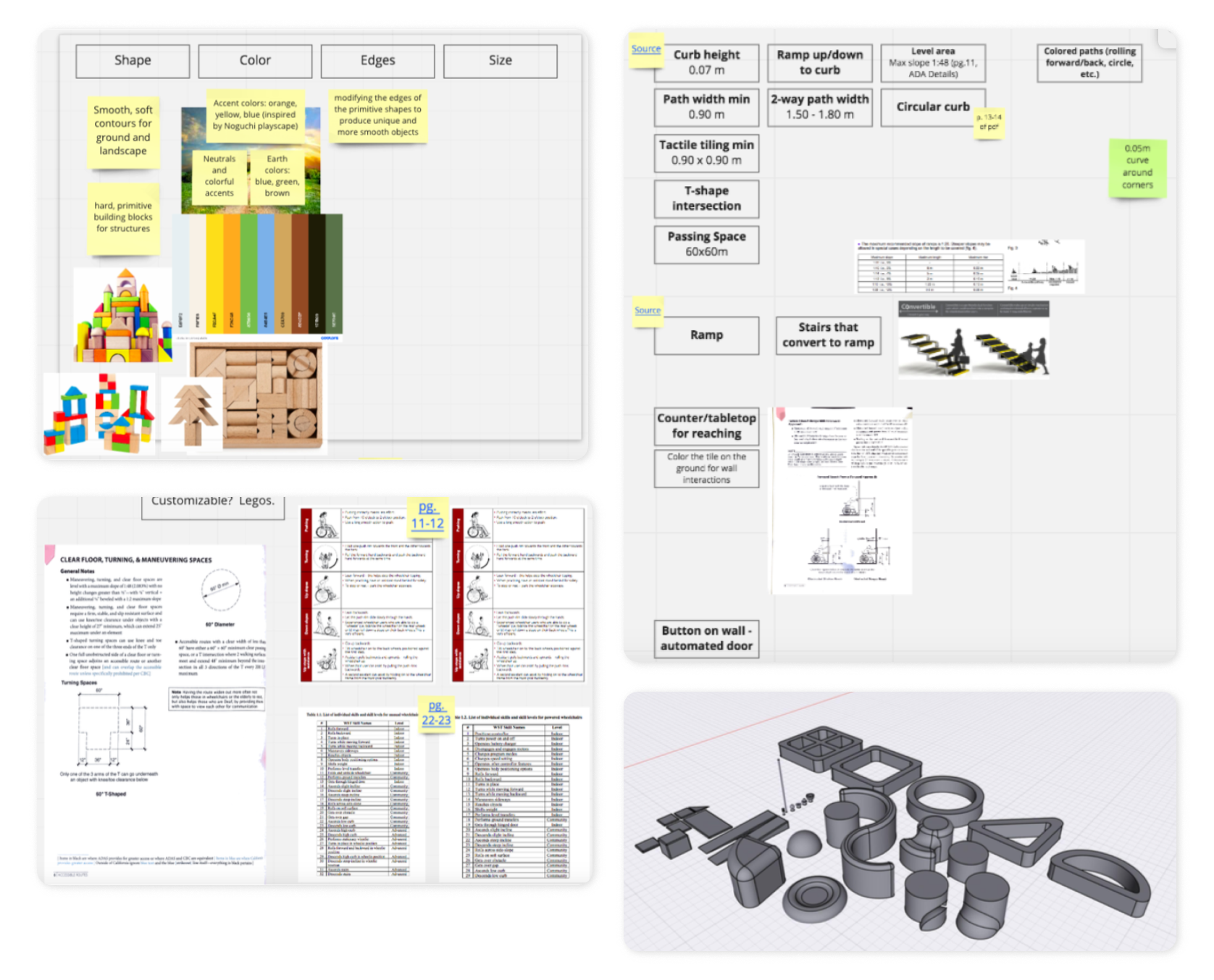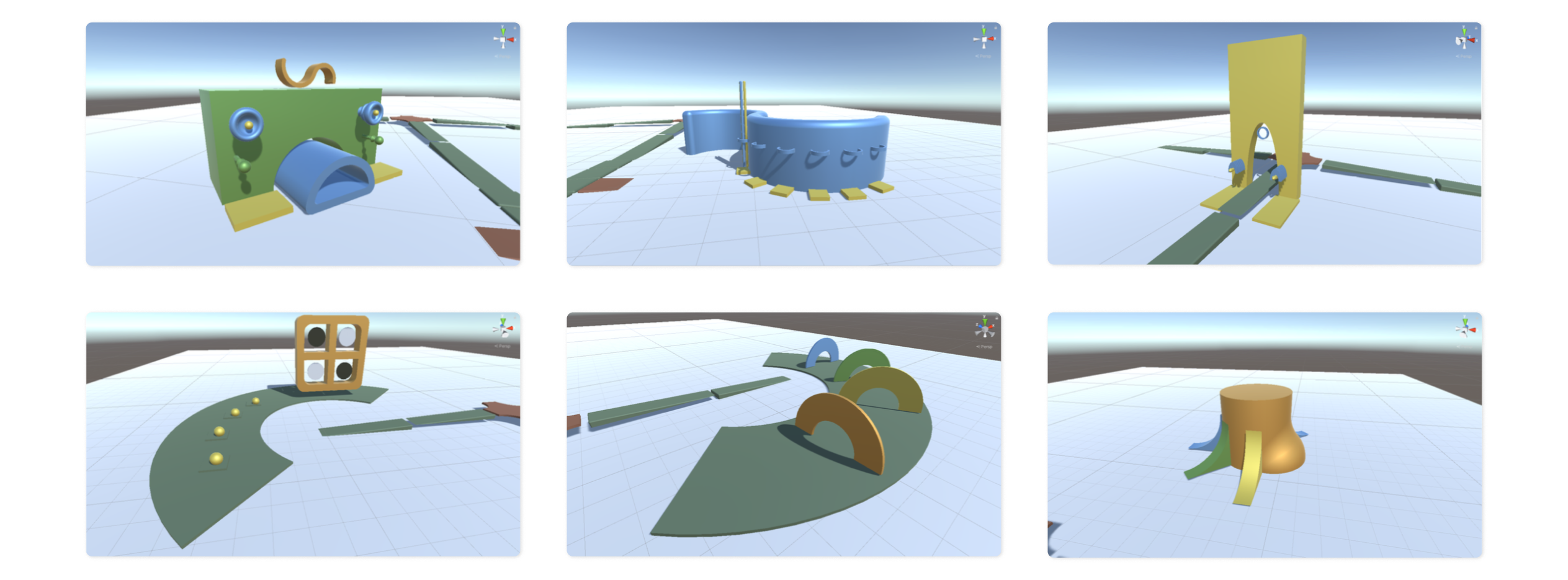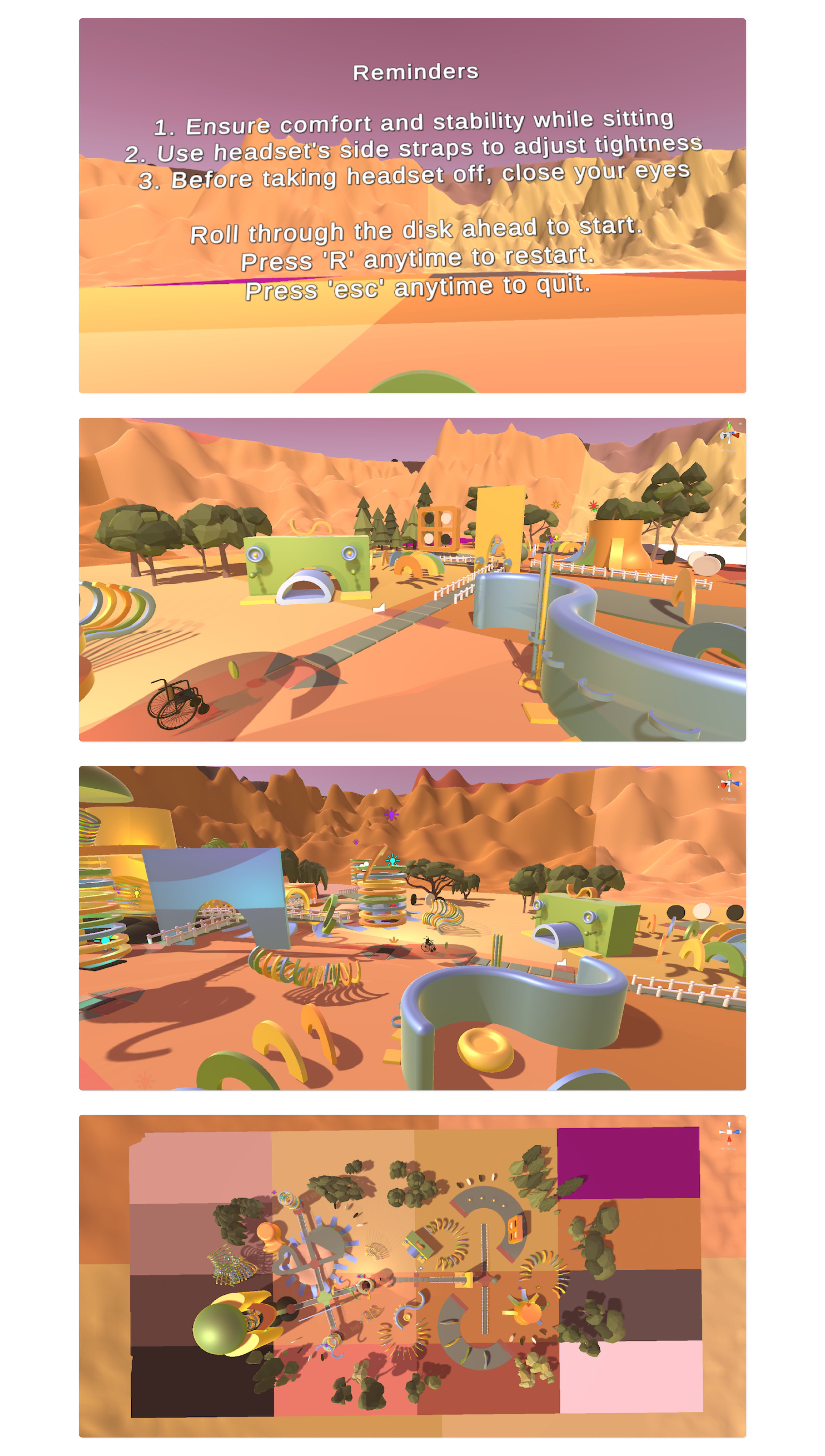Decision 1
Designing a modular block system
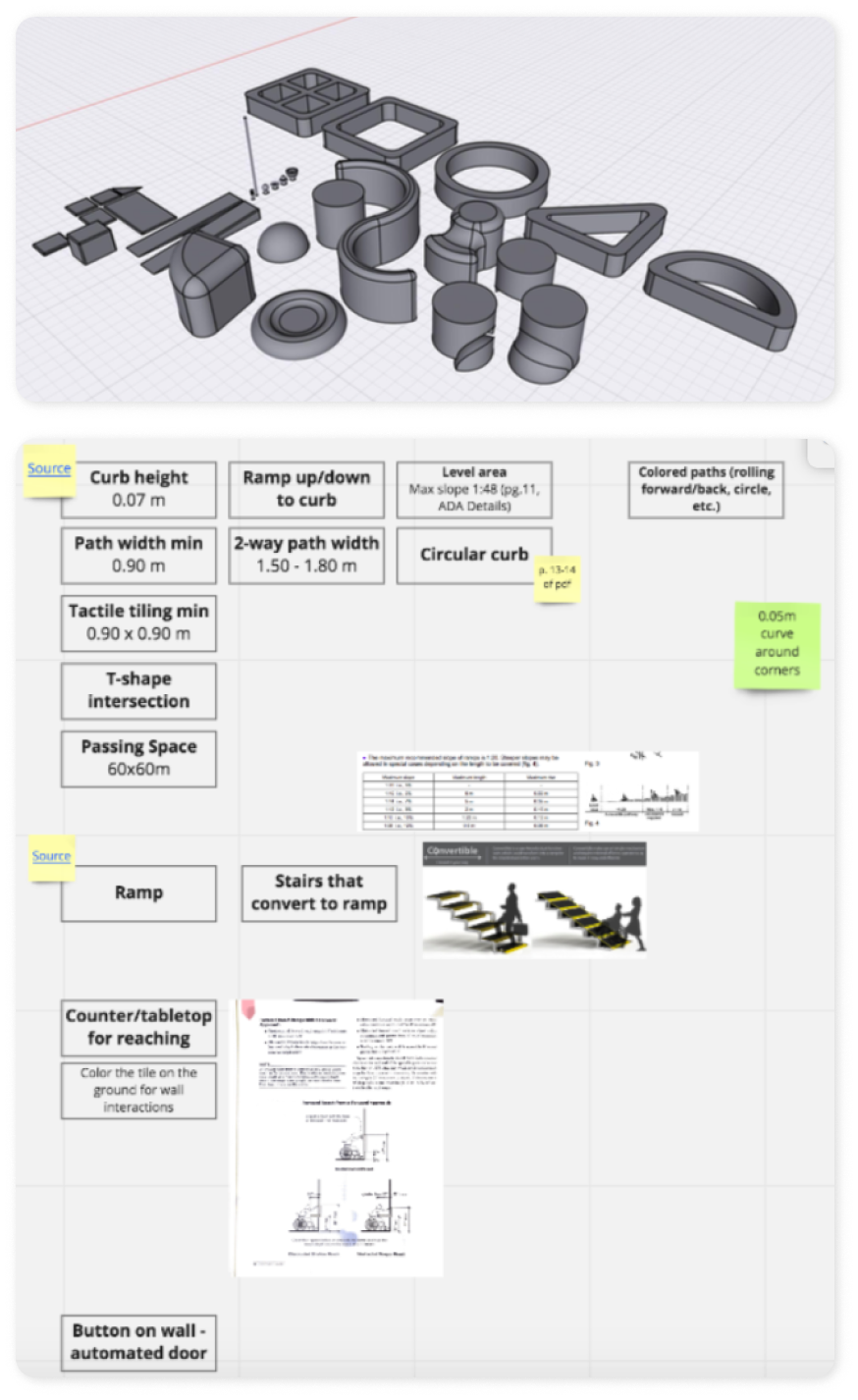
GOALS ADDRESSED:
One beneficial application of investigating how wheelchair-bound users navigate and interact with the built environment is for physical therapy. I envisioned creating a method where therapists could easily create their own therapeutic, accessible environments for patients.
This involved creating a design system of simple, modular units that could be used to create different common built structures and environmental features. With the assistance of Alara Degirmenci, we developed the instructions for what could exist in the system, with guidelines on the color palette, block style, and block sizing. We further specified our sizing requirements by incorporating various ADA and architectural codes into some modular units such as for road tiles, handrails, and ramp slopes.
With the design language established and in use, I 3D-modeled various basic objects with Shapr3D, an iPad 3D-modeling app.
Decision 2
Rapid prototyping in Unity

GOALS ADDRESSED:
The next step was to create the playground setting with the modular units in action. This was done in Unity utilizing the Verb Collective to manage the interactions with the environmental objects. The Verb Collective, originally made by Justin Berry, is an example of such an asset. It is a rapid prototyping tool that is easily customizable, designed for collaboration, and allows non-experts and experts alike to quickly develop interactions based on a series of different verbs that trigger according to different states. Each verb is a script that may be attached to objects in Unity and can trigger other verbs or objects.
Although no coding is necessary for people to use the Verb Collective, developers can create custom verbs that fit their project and also add to the collection. My addition to the Verb Collective was through four scripts—to pulse, to recolor, to change gravitate, and to gradient color. Each script had the purpose of providing small, delightful feedback to the interactions that the user would take in the environment.
Decision 3
A whimsical, functional virtual world
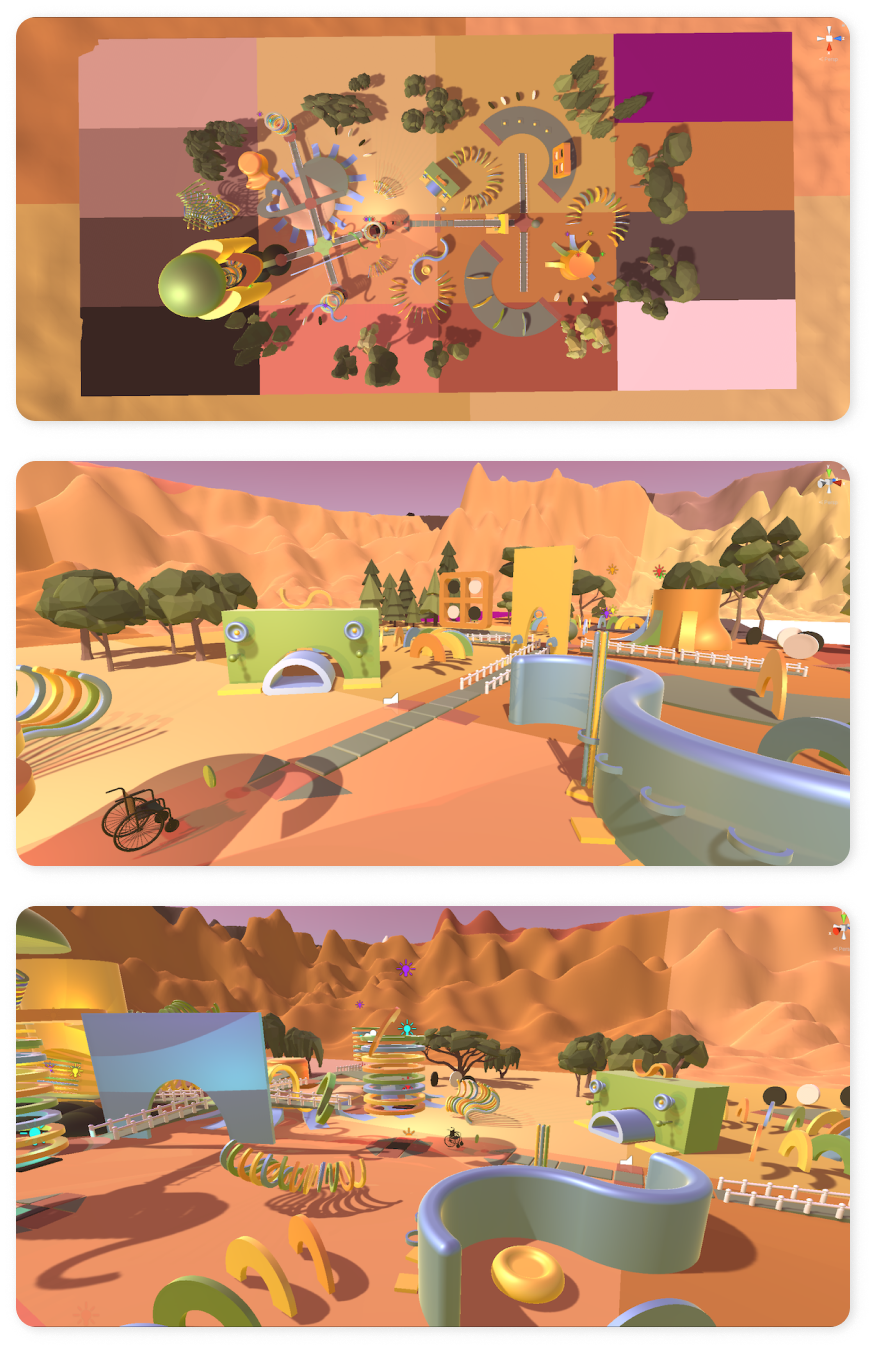
GOALS ADDRESSED:
Creating a joyful but function environment was critical to making users receptive to try the experience. I placed clear instructions in the initial screen, platforms and paths to encourage exercises/activities, and created a comforting environment with mountains, warm lighting, ambient sound.
Examples of different stations that assessed the user’s mobility and coordination:
- Travel on a straight path and up a slight incline
- Push knobs to make balls fall and push them through a hollow arch
- Rod grabbing and placement
- Horseshoe grabbing from high position
- Ball grabbing to throw at disks far away
- Hitting arches
- Slaloming
Decision 4
Connecting the wheelchair with minimal guidance
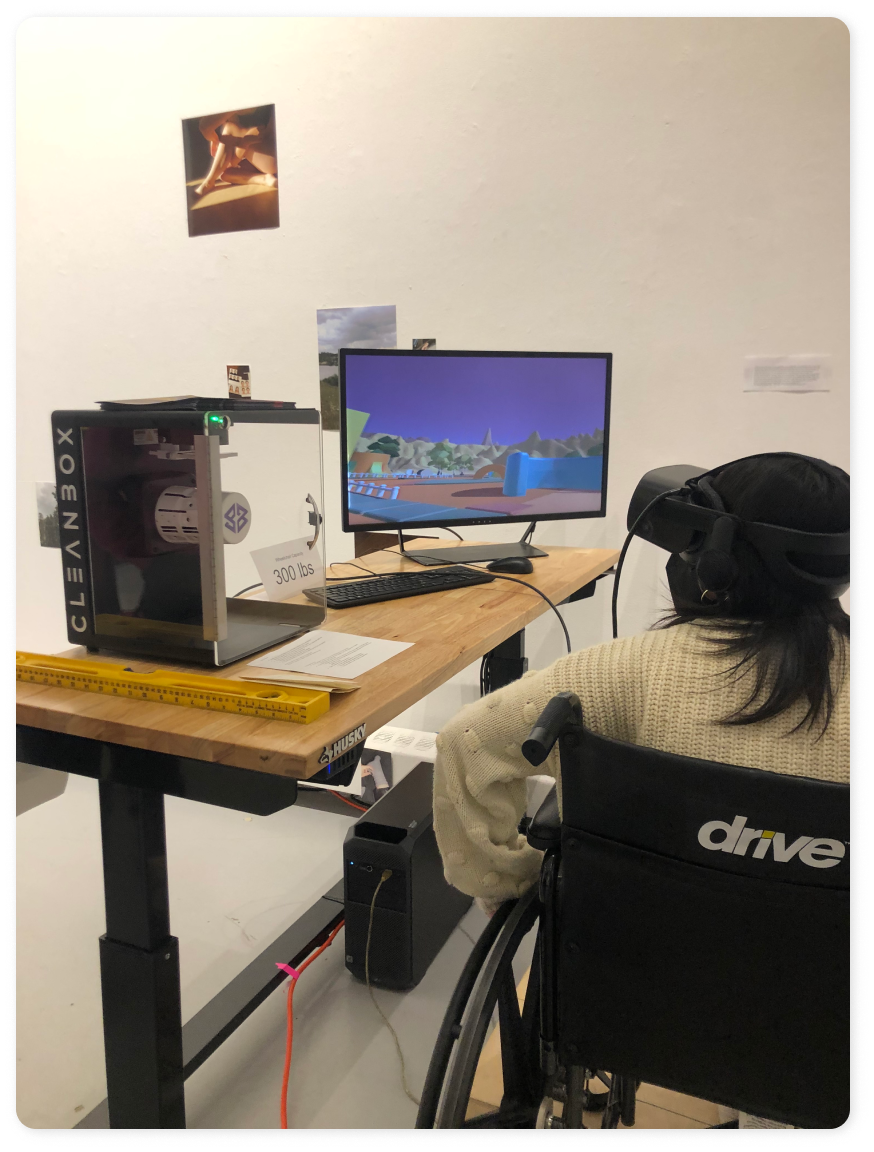
GOALS ADDRESSED:
My thesis exhibition presented the full experience of sitting in the stationary wheelchair, strapping on the headset, and traveling through my world. I let people explore the world with minimal instruction and also allowed adjustments to the speed of wheelchair movement in VR to help prevent potential nausea.
Moving was simple and intuitive – all anyone had to do was roll the wheels of the wheelchair to move, as they would in real life.
Results
Wonderment, intuitive navigation, and newfound empathy
Guests at the exhibition expressed wonderment and joy through my project. Most notably, they experienced:
- Very joyful, child-like wonder reawakened in exploring
- Ease of navigation with the wheelchair, an intuitive interface even for non-regular-wheelchair-users
- New sense of empathy for wheelchair users after facing some struggles in navigation
While some users faced technical difficulties in resetting the world or getting stuck in some places in VR, all greatly appreciated experiencing this new method of navigating through a virtual environment.







